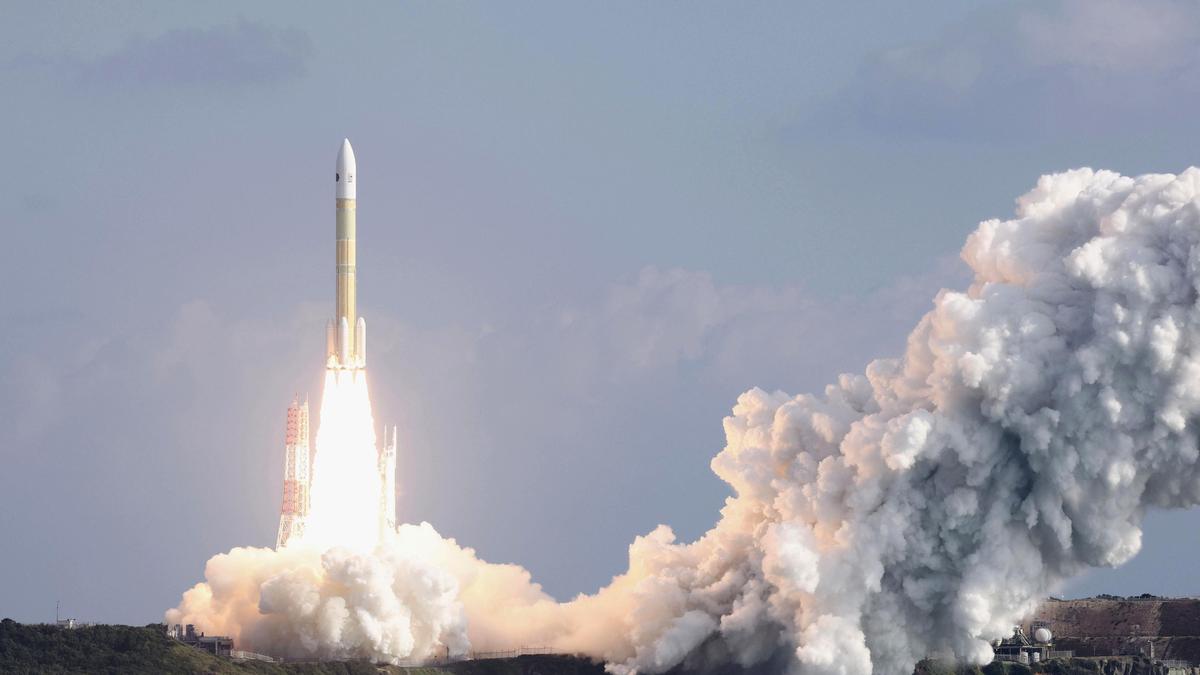Japan successfully launches new cargo spacecraft to deliver supplies to ISS

IN NEWS: Japan Successfully Launches New Cargo Spacecraft to Deliver Supplies to ISS
Source:The Hindu, October 26, 2025
UPSC-Style Analysis
1. Context & Event Summary
- Japan Aerospace Exploration Agency (JAXA) successfully launched its new flagship H3 rocket carrying the HTV-X1 cargo spacecraft from Tanegashima Space Center, southern Japan.
- The mission marks the first operational flight of the HTV-X series to deliver supplies to the International Space Station (ISS).
- The spacecraft was successfully inserted into the planned orbit, and is scheduled to dock with the ISS in a few days, to be captured by a robotic arm operated by astronaut Kimiya Yui.
2. Mission Highlights
- HTV-X1 (H-II Transfer Vehicle-X):
- Successor to the H-II Transfer Vehicle (HTV “Kounotori”), which conducted 9 successful missions (2009–2020).
- Features:
- Larger payload capacity compared to HTV.
- Power supply capability during flight — allowing transport of temperature-sensitive biological materials like cell cultures and lab samples.
- Longer ISS attachment duration — up to 6 months for supply and waste retrieval.
- Post-mission independent orbital flight for up to 3 months, supporting technical or experimental missions.
3. H3 Rocket Overview
- Replaces: Japan’s H-2A rocket (retired June 2025 after 46 successful launches).
- Manufacturer: Mitsubishi Heavy Industries (MHI) in collaboration with JAXA.
- Objective: Develop a cost-competitive and reliable launch vehicle to strengthen Japan’s presence in the global commercial space launch market.
- Performance Record:
- Total launches: 7 (as of Oct 2025).
- First launch failure (2023) – self-destructed due to engine failure.
- Subsequent six launches – 100% success rate.
- Strategic Importance: Enhances Japan’s autonomous access to space, crucial for both commercial competitiveness and national security.
4. Strategic and Technological Significance
- Space Autonomy: Reduces reliance on foreign launch systems; aligns with Japan’s growing focus on independent space logistics.
- ISS Collaboration: Reinforces Japan’s long-term role in ISS operations and international cooperation in space science.
- Next-Generation Technology:
- Modular and reusable design potential in future upgrades.
- Integration with AI-based mission monitoring and efficient cryogenic propulsion systems.
- National Security Dimension: Strengthens Japan’s ability to monitor, deploy, and maintain dual-use space systems (communication, observation, and logistics).
5. Broader Context
- The HTV-X program also lays groundwork for future lunar missions, as Japan partners with NASA under the Artemis program for lunar gateway logistics.
- JAXA’s consistent success post-2023 failure showcases resilience and engineering maturity, vital for expanding its commercial satellite launch portfolio.
Static Part (for Prelims & Mains Integration)
| Parameter | Details |
|---|---|
| Agency | Japan Aerospace Exploration Agency (JAXA) |
| Launch Vehicle | H3 Rocket |
| Spacecraft | HTV-X1 (H-II Transfer Vehicle-X) |
| Launch Site | Tanegashima Space Center, Japan |
| Orbit | Low Earth Orbit (LEO) – en route to ISS |
| First HTV series (Kounotori) | 2009–2020 (9 missions) |
| Replacement for | H-IIA rocket |
| Duration on ISS | Up to 6 months attached, 3 months in free orbit |
| Purpose | Deliver supplies, conduct experiments, retrieve waste |
| Operator | JAXA in partnership with international space agencies |
Updated - October 26, 2025 08:59 am | The Hindu